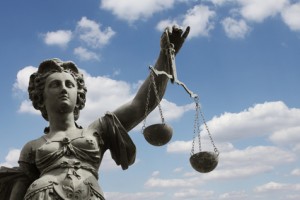For a small fee or sometimes even for free, stock photo agencies such as Fotolia offer the use of professional photographs. However, restrictions can often apply to the use of downloaded photos and reference to the copyright holder must almost always be made.
Copyright infringement warning letters are increasingly being sent for failing to identify the copyright holder of a photo. This is particularly the case where stock photos have been taken from databases such as Fotilia or Pixolio.
Stock photo licence agreements
Stock photo agencies acquire their photos from photographers. These photos are then offered to third parties for use under licence agreements. The licence agreements, which many people do not read, often contain express provisions requiring the third party to make reference to the photographer.
In addition to the licence agreements, the duty to identify a photographer is contained in the Copyright Act (Urheberrechtsgesetz, UrhG). A photographer has a right to be named as the creator of the photo. This allows the photographer’s name to be publicised and for income from other sources to be received. Where a third party obtains a licence to use a photo and forgets to identify the creator, he stands the risk of having to pay high compensation.
Compensation due for failing to identify photographer
Even if the use of a stock photo only costs several euros, the amount of compensation which becomes payable for failing to name the creator can quickly reach 1000 euros. This is because professional licence fees are used to calculate the amount of compensation owed. These contrast with stock photo agency licence fees which are often much cheaper. Furthermore failing to make reference to the creator often leads to an uplift of the photographer’s base fee by 100%.
Legal framework: identifying the creator of a photo
For copyright purposes, photographs are protected under §2 sub-paragraph 1 no. 5 UrhG. A photographer is classed as the creator of a photograph (see §7 UrhG). Under §13 UrhG the photographer has the right to be identified as author of the work.
It is therefore imperative, that when using photos taken by another, full recognition of the author is given. Where the creator of a photo is not properly identified a copyright infringement occurs and the creator has a number of remedies available. These include: the right to demand that the infringement is brought to an end, the right to bring a cease and desist claim and the right to compensation (see §§ § 97 sub-paragraph 1 sentence 1 and 97 sub-paragraph 2 sentence 1 UrhG).
Conclusion
It is therefore highly advisable to carefully read a licence agreement before using a stock photo. Every photographer has individual requirements concerning the use of his photos and the recognition sought. Failure to correctly identify the creator of a photograph can quickly result in a warning letter and costly repercussions.


